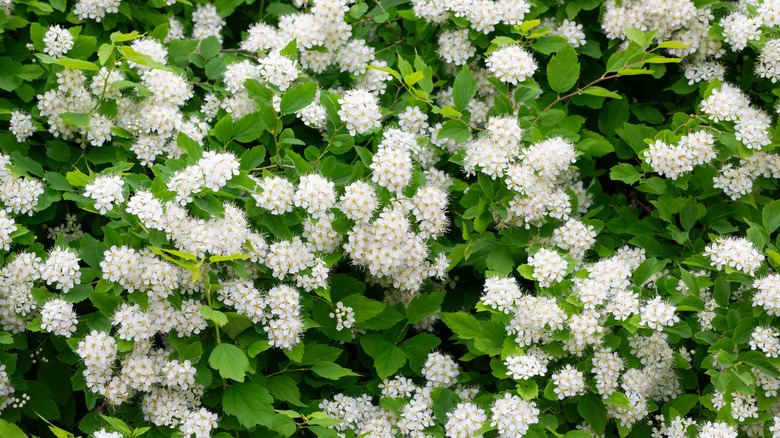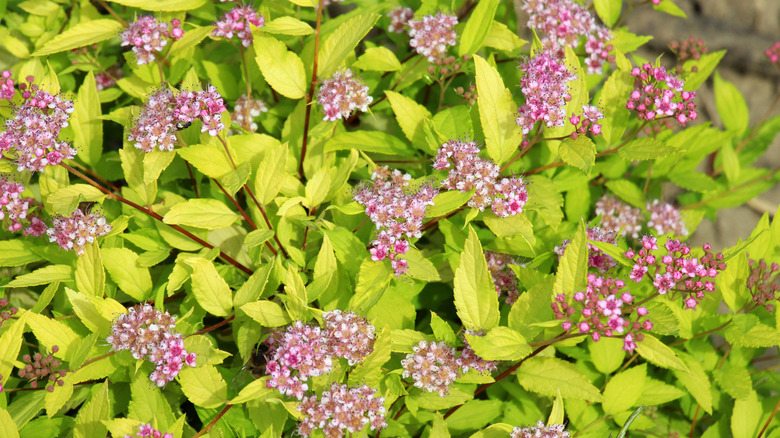Essential Fall Tasks To Keep Spirea Plants Looking Their Healthiest & Best
Spirea (Spiraea spp.) is a shrub that's hardy in USDA Zones 4 to 8, though some of them can tolerate a wider range of regions. There are several varieties, and depending on which one you get, they can grow anywhere from 2 to 3 feet tall and wide to 10 feet in either direction. No matter what size you go with, the plants will need regular maintenance to thrive. That care continues throughout every season.
Fall is generally considered the best time to prune spirea to keep its blooms looking great, but this isn't the case for all species and varieties. There are two main kinds of spirea. The first is a spring-blooming variety. As you might guess, they tend to produce flowers early in the year, and those blooms appear on old growth. The other main category encompasses those that bloom in the summer. These produce flowers later, since they grow on the new growth.
Because of the differences in how they flower, spring-blooming spirea are plants you shouldn't be pruning in the fall, as you're likely to cut off blooms and areas where the flowers can form. However, summer-blooming varieties respond well to a hard fall pruning. Cutting back old growth encourages new branches, which support heavier flowering for you to enjoy when summer arrives.
Summer-blooming spirea are very forgiving when it comes to pruning
During fall, you want to remove any parts of your spirea that look sick, injured, or dead, for any variety. For summer-blooming varieties, you can do some additional work, like cutting back any overlapping or twisting branches for a nicer-looking shrub. This is also a good time to shape the plant and maintain the size you prefer.
The plant can be cut back hard — leaving only 8 to 12 inches of stem — which is a common trick for keeping spirea neat. While it may seem drastic to cut back your plant that much, spirea typically responds well and regrows vigorously in spring. While you don't have to do it every year, if you notice your plant getting a bit leggy or thinning out, a hard cut back to the crown is a great way to encourage a bushier, thicker plant.
Spirea are fast-growing, so fall shouldn't be the only time you prune them. They need care at least twice a year, so checking back in with your plant in the spring is still a good option. Additionally, several varieties of spirea, including Japanese spirea (Spiraea japonica), are considered invasive. It's best to avoid these varieties, but if they're already in your yard, consistent pruning is important.

